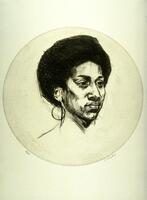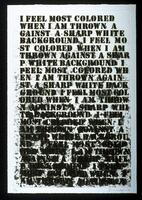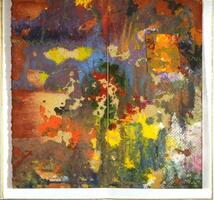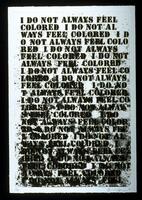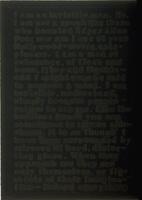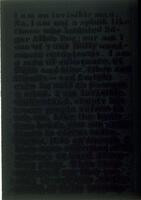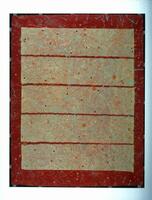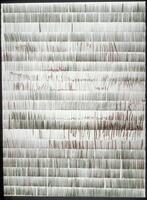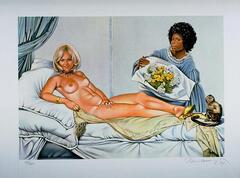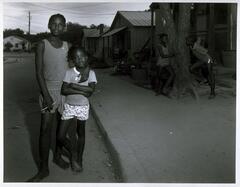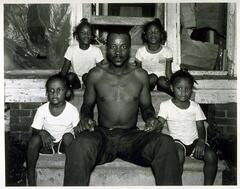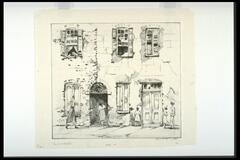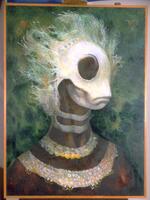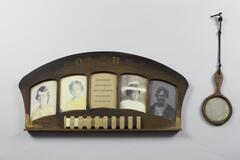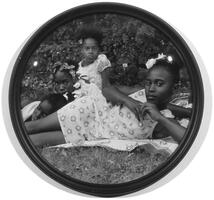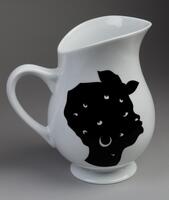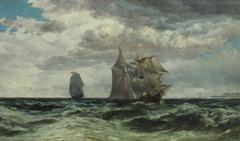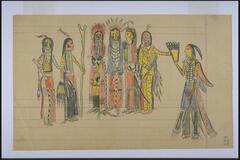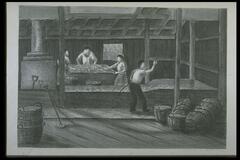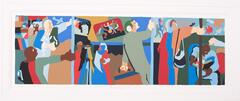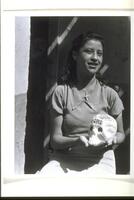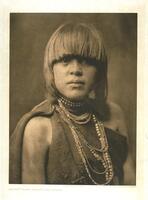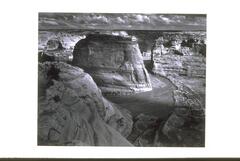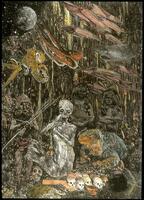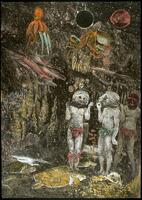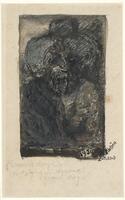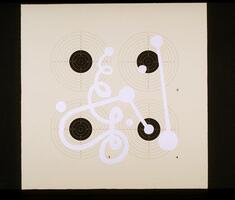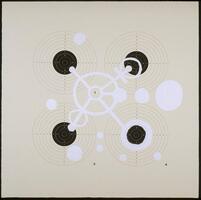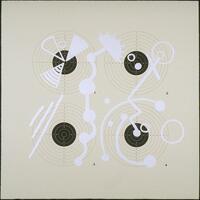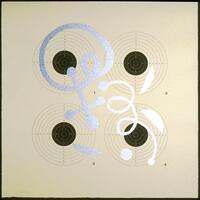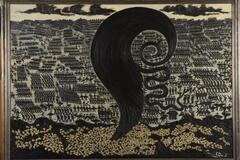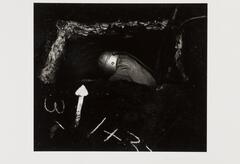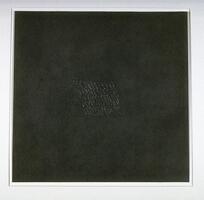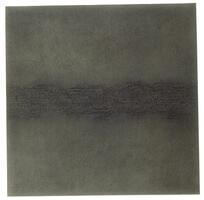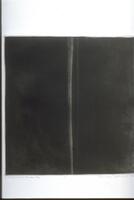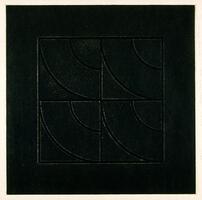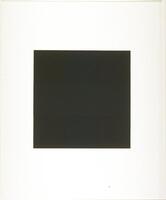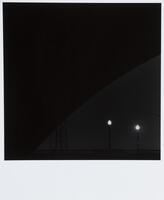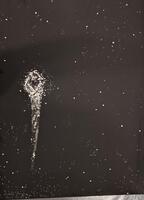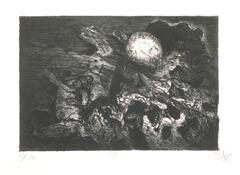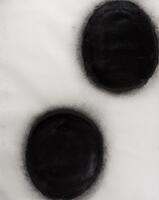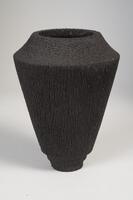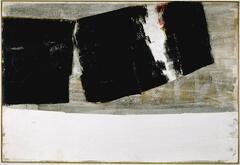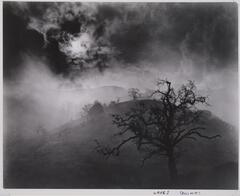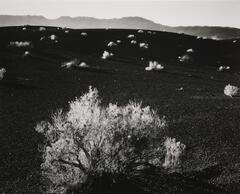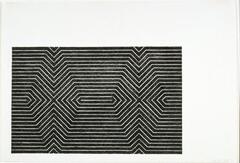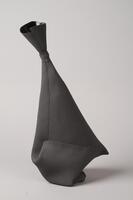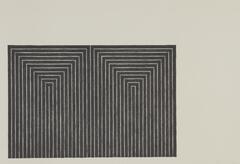22 Items in this Learning Collection
Collection Object
Collection Object
Collection Object
Collection Object
Collection Object
Collection Object
Collection Object
Collection Object
Collection Object
Collection Object
Resource with 3 media
Collection Object
Collection Object
Collection Object
Collection Object
Resource with 87 media
Copyright
All Rights Reserved
()
Untitled
Accession Number
1993/2.13.2
Title
Untitled
Artist(s)
Glenn Ligon
Object Creation Date
1992
Medium & Support
etching, aquatint, spitbite, sugarlift on Rives BF
Dimensions
25 in x 17 1/4 in (63.5 cm x 43.82 cm);32 3/16 in x 26 3/16 in (81.76 cm x 66.52 cm)
Credit Line
Museum Purchase
Label copy
Since childhood, Glenn Ligon has been fascinated with literature. This fascination led him to think about the political and social uses of languages. As a result, his art has focused on giving force and weight to the written word around issues of identity and race. Ligon selects phrases from works by writers such as James Baldwin, Ralph Ellison, Mary Shelley, and Jean Genet, then hand stencils these phrases onto canvas or the printing plate. Often the text becomes obscured as it progresses line by line, calling into question the reliability of seeing and seeing each other.
In Untitled (I Am An Invisible Man), Ligon draws upon a phrase from Ellison’s The Invisible Man. He transforms legibility into illegibility and investigates how people see and read—how they witness an incident and judge people subjectively or objectively. He is looking at the rationalization of race as well as self-identification. Speaking about this work, Ligon remarked that "...Ellison uses the metaphor of invisibility to describe the position of blacks in this country, as ghost, present and real but because of the blindness of racism, unseen. [My] prints work with this idea of invisibility by making the viewer strain to read the text, but making the text, through embossing, have a lot of physical presence."
Sean M. Ulmer, University Curator of Modern and Contemporary Art, for "A Matter of Degree: Abstraction in Twentieth-Century Art," November 10, 2001 - January 27, 2002
Subject matter
One of a suite of four etchings, this work quotes the Harlem Renaissance writer Zora Neale Hurston's 1928 essay "How It Feels to be Colored Me." In it, Hurston described how she first became aware of her Blackness when she left her "Negro town of Eatonville, Florida" in the early 1900s to go to school in Jacksonville, FL. Hurston's Blackness is seen by others as a defining and negative characteristic, and she is forced to "feel [her] race." Nevertheless, she has positive feelings about her identity, and defiantly embraces her complete identity which is much more expansive than her race. She can be her whole self, without constantly being aware of what it means to be Black in America, until she is made aware of it by others; Hurston's essay also refers to code-switching. This is just one of a larger series of works that incorporate text and literature. Ligon's work does not exclusively cite texts by African Americans, but instead he appropriates a wide variety of source material in order to bring attention to the connections and relationships between his own history and collective experience.
Physical Description
This print has rows of stencilled black text in all capital letters on white background. In pencil, the print is signed and dated (l.r.) "Glenn Lignon '92" and numbered (l.l.) "27/45".
Primary Object Classification
Print
Collection Area
Modern and Contemporary
Rights
If you are interested in using an image for a publication, please visit http://umma.umich.edu/request-image for more information and to fill out the online Image Rights and Reproductions Request Form.
Keywords
African American
Figures
aquatint (printing process)
children
etching (printing process)
literature (humanities)
men
modern and contemporary art
portfolios (groups of works)
text (layout feature)
words
1993/2.13.2
Title
Untitled
Artist(s)
Glenn Ligon
Object Creation Date
1992
Medium & Support
etching, aquatint, spitbite, sugarlift on Rives BF
Dimensions
25 in x 17 1/4 in (63.5 cm x 43.82 cm);32 3/16 in x 26 3/16 in (81.76 cm x 66.52 cm)
Credit Line
Museum Purchase
Label copy
Since childhood, Glenn Ligon has been fascinated with literature. This fascination led him to think about the political and social uses of languages. As a result, his art has focused on giving force and weight to the written word around issues of identity and race. Ligon selects phrases from works by writers such as James Baldwin, Ralph Ellison, Mary Shelley, and Jean Genet, then hand stencils these phrases onto canvas or the printing plate. Often the text becomes obscured as it progresses line by line, calling into question the reliability of seeing and seeing each other.
In Untitled (I Am An Invisible Man), Ligon draws upon a phrase from Ellison’s The Invisible Man. He transforms legibility into illegibility and investigates how people see and read—how they witness an incident and judge people subjectively or objectively. He is looking at the rationalization of race as well as self-identification. Speaking about this work, Ligon remarked that "...Ellison uses the metaphor of invisibility to describe the position of blacks in this country, as ghost, present and real but because of the blindness of racism, unseen. [My] prints work with this idea of invisibility by making the viewer strain to read the text, but making the text, through embossing, have a lot of physical presence."
Sean M. Ulmer, University Curator of Modern and Contemporary Art, for "A Matter of Degree: Abstraction in Twentieth-Century Art," November 10, 2001 - January 27, 2002
Subject matter
One of a suite of four etchings, this work quotes the Harlem Renaissance writer Zora Neale Hurston's 1928 essay "How It Feels to be Colored Me." In it, Hurston described how she first became aware of her Blackness when she left her "Negro town of Eatonville, Florida" in the early 1900s to go to school in Jacksonville, FL. Hurston's Blackness is seen by others as a defining and negative characteristic, and she is forced to "feel [her] race." Nevertheless, she has positive feelings about her identity, and defiantly embraces her complete identity which is much more expansive than her race. She can be her whole self, without constantly being aware of what it means to be Black in America, until she is made aware of it by others; Hurston's essay also refers to code-switching. This is just one of a larger series of works that incorporate text and literature. Ligon's work does not exclusively cite texts by African Americans, but instead he appropriates a wide variety of source material in order to bring attention to the connections and relationships between his own history and collective experience.
Physical Description
This print has rows of stencilled black text in all capital letters on white background. In pencil, the print is signed and dated (l.r.) "Glenn Lignon '92" and numbered (l.l.) "27/45".
Primary Object Classification
Collection Area
Modern and Contemporary
Rights
If you are interested in using an image for a publication, please visit http://umma.umich.edu/request-image for more information and to fill out the online Image Rights and Reproductions Request Form.
Keywords
African American
Figures
aquatint (printing process)
children
etching (printing process)
literature (humanities)
men
modern and contemporary art
portfolios (groups of works)
text (layout feature)
words


